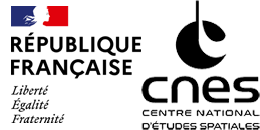COMET OOE led by the French Space Agency (CNES) is excited to announce the first Workshop devoted to Frequency Comb Lidars.
Until now lidars feature a limited number of wavelengths, typically one “ON” and one “OFF” (DIAL lidars). Since c.a. 2014 the use of a frequency comb has been envisaged to scan a more or less large part of the spectrum. The richness of information opens the path to more powerful retrieval methods, hence richer and more accurate measurements with less bias.
As far as space applications are concerned, due to high energy levels needed, large comb backscatter lidars are expected in the mid-term future, whereas short comb lidars lead to a compromise between spectral coverage and power that can be foreseen in the next decade. Limb or occultation space lidars may involve large combs with limited total energy and are considered too. These concepts could be a trigger for the development of a program addressing the Green House Gazes issue, in terrestrial, airborne and space instruments.
Other applications can be derived as wind lidars, aerosol lidars, or ranging lidars, and benefit from frequency combs in a way or another.
Since 2014 / 2016 several activities were developed in America, in France, and elsewhere, at NIST, ONERA, CNES et al. to develop this technology. Time has come to have an overview of these works, to make them known, to share their results, and to discuss technical perspectives with a larger lidar community, laser experts, laboratories involved in atmospheric sounding etc… That’s the goal of the first workshop on “comb lidars.




